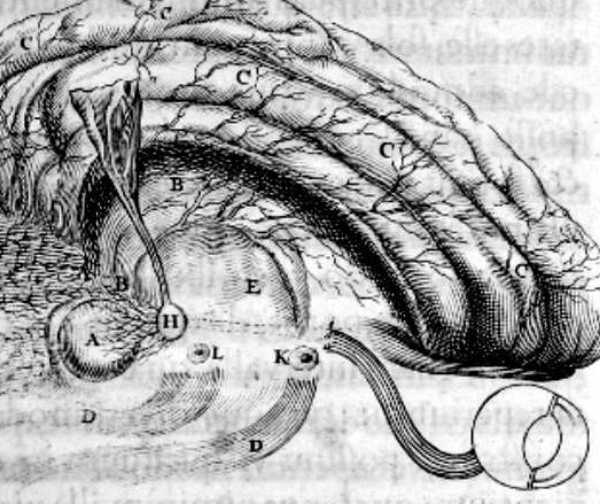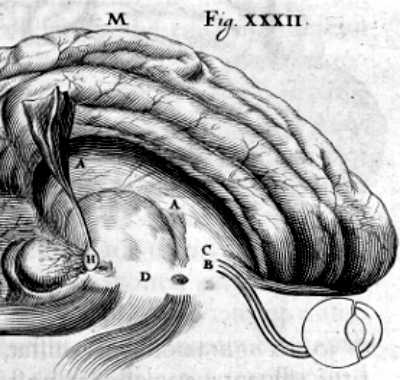The Distribution of the Animal Spirits
Table of Contents
The distribution of spirits explains the mechanics of the pineal gland.
These spirits are not confined to any place.
As they enter the ventricles of the brain EE through the openings H in the pineal gland, they immediately tend towards the tubes aa, which are directly opposed to them.

If these tubes are less open to receive all of them, at least the stronger and more agile ones will be received.
Meanwhile, the weaker and residual ones are repelled towards the channels I, K, L, which face the nostrils and palate.
Specifically, they are more agitated towards channel I.
- When they have enough vigor and find less free exit, they sometimes leap forth impetuously from this channel.
- This causes tickling in the interior parts of the nostrils, and thus sneezing.
The remaining spirits are then received into channels K and L, which are very capacious.
- This allows easy passage for them.
If entry is denied there, they are forced to return to the tubes aa which are on the inner surface of the brain.
- This causes immediate scotoma or vertigo, disturbing the functions of imagination.
When the spirits exit from gland H, they tend towards the concave spaces or the inner surface of the brain directly opposite to them.
I do not mean that they tend directly towards those two points diametrically opposite to them.
The substance of the brain is very soft and pliable.
Its cavities would be very narrow and almost entirely closed, as is seen in the brain of a corpse when certain spirits did not enter them.
But the origin place where those spirits emanate usually abounds with spirits.
As soon as they enter the brain’s ventricles, they have the strength to:
- remove any surrounding material hindering them
- inflate any surrounding material
- intensify all the nerve filaments that proceed from it
This is similar to how a slightly stronger wind can spread sails and stretch all the ropes attached to them.
Thus, our body is arranged to obey all the actions of the spirits equally.
Being Asleep and Awake
The moving spirits carry the body of a waking person before it.
At least, the spirits have the power to push and thus expand a part of the brain, while the other parts remain motionless and slack.
- This is similar to sails relaxing when the wind is too weak.
The body that is arranged in this way represents the body of a sleeping person to whom various phantasms occur through dreams.
For example, conceive of the difference between M and N, which we observe between a person half-awake and sleeping, and simultaneously dreaming.

